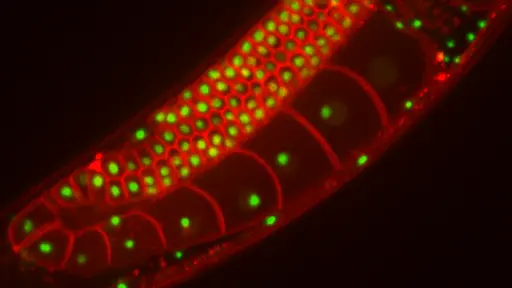Welcome to the Weber Lab @ McGill University
At the Weber Lab, we are dedicated to answering fundamental questions about the spatial organization of living systems. From the complex architecture of eukaryotic cells to the elegant simplicity of prokaryotes, our research focuses on understanding how spatial and temporal regulation impacts cellular behavior, growth, and organismal health. Using cutting-edge techniques such as live-cell imaging, biophysical modeling, and quantitative analysis, we delve deep into the processes that govern cellular organization and uncover principles that influence health and disease.
Exploring Spatial Organization and Cellular Dynamics to Unveil the Secrets of Life
Our Mission
To advance the understanding of cellular organization and its implications for biology and medicine by bridging molecular, cellular, and organismal insights. We aim to inspire a new generation of scientists while contributing meaningful solutions to the challenges facing biology today.

Our Research Areas
1. Spatial Organization of Living Systems
Cells are inherently complex, containing a vast mixture of macromolecules that must be organized for efficient functioning. In eukaryotes, membranes segregate these components into organelles like the nucleus, mitochondria, and Golgi apparatus. However, not all structures are membrane-bound.
- Focus Areas:
- How do non-membrane-bound bodies, such as the nucleolus, assemble and persist?
- What roles do these structures play in cellular and organismal health?
2. Nonequilibrium Phase Separation
Phase separation describes how molecules self-organize into distinct compartments. These processes are essential for forming cellular structures like the nucleolus, which assembles ribosomes crucial for protein synthesis. However, cells are not at thermodynamic equilibrium. Active processes like transcription and metabolic reactions consume energy, driving the cell into nonequilibrium states.
- Research Goals:
- Investigating how nonequilibrium dynamics affect phase-separated structures.
- Understanding how organisms regulate phase separation during development and environmental stress.
3. Growth and Size Coordination Across Scales
The coordination of size and growth is a central challenge in biology. From the scaling of nucleolar size with nuclear dimensions to the proportional growth of tissues and organs, understanding how size is regulated is critical for revealing the mechanisms of development and health.
- Our Approach:
- Using C. elegans embryos to explore scaling relationships between cellular and subcellular structures.
- Linking phase separation to size regulation across multiple biological levels.
4. Spatiotemporal Regulation of Transcription
Prokaryotes like Escherichia coli lack membrane-bound organelles, yet they still exhibit remarkable spatial organization. For example, RNA polymerase clusters into transcriptional foci, which may act as bacterial equivalents of the nucleolus.
- Key Questions:
- Do phase separation principles extend to prokaryotic systems?
- How do these transcriptional foci enhance cellular efficiency under varying growth conditions?
Why Our Research Matters
Health and Disease
Our work sheds light on the molecular underpinnings of diseases caused by dysregulated spatial organization. By understanding how cellular structures form and function, we can uncover insights into conditions like cancer, neurodegenerative disorders, and developmental defects.
Biological Innovation
The principles we study extend beyond biology, informing fields like synthetic biology, bioengineering, and nanotechnology. By mimicking nature’s strategies for self-organization, we can inspire new technological breakthroughs.

Meet Our Team
- Dr. Steph Weber – Assistant Professor
A pioneer in cellular organization, Dr. Weber combines expertise in biophysics and molecular biology to uncover the rules governing life at the cellular level.
Postdoctoral Researchers
- Anne-Marie Ladouceur: Exploring organelle size regulation using C. elegans and biophysical approaches.
Graduate Students
- Peng A: Investigating the role of phase transitions in non-membrane-bound organelles.
- Megan Couture: Studying nucleolar assembly mechanisms in developing embryos.
Our lab is proud to mentor a dynamic group of undergraduate students, including:
- Albright Kim – Biochemistry major researching nucleolar proteins.
- Graydon Tope – Dual major in Cellular Biology and Anthropology, exploring the intersection of biology and culture.
- Natika Bikraj – Investigating rRNA dynamics in early C. elegans embryos.

Events and Collaborations
We actively contribute to the global scientific community by participating in and hosting events, including:
- Montreal Worm Meeting – Showcasing research on C. elegans as a model organism.
- Cellular Dynamics and Models Workshop – Discussing innovative approaches to cell biology.
- Montreal-area Phase Separation (MAPS) Symposium – Bringing together researchers to explore phase transitions in cells.
- Keynote Talks at International Conferences – Sharing our findings with scientists worldwide.

Join the Weber Lab
Collaborate with Us
We welcome researchers, students, and institutions interested in advancing the understanding of spatial organization and cellular dynamics.
Opportunities for Students
Whether you’re an undergraduate, graduate, or postdoctoral researcher, our lab offers unparalleled opportunities to engage in cutting-edge science.